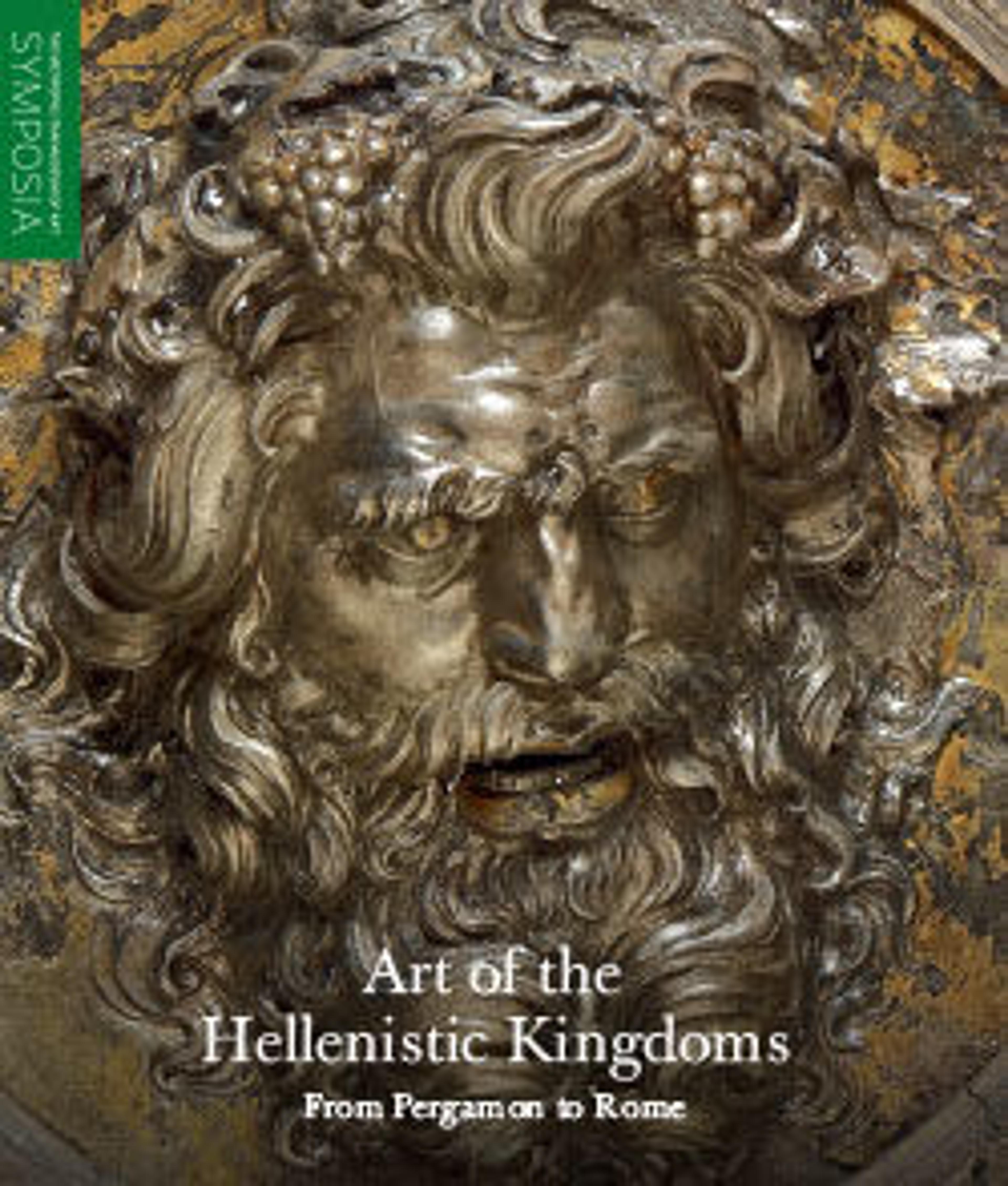Glass striped mosaic bowl
Colorless, translucent deep purple (appearing almost black), pale blue green, deep honey yellow, and opaque white.
Vertical rim with rounded edge; convex curving side tapering downwards to flat bottom within applied outsplayed base ring with thick rounded edge.
Striped mosaic pattern formed from lengths of three canes laid side by side in five parallel rows and separated from one another by rows of cubes laid end to end in an irregular pattern; the central cane comprises layered lengths of white and green creating the effect of reverse colors on the exterior and interior;a cane comprising a purple stripe enclosing a fine white line, a white, a green, and then a yellow stripe that also has a white line, arranged in mirror image to either side of the central cane; and a third cane comprising green and white stripes flanking a purple stripe with a central white line; a colorless network cane wound spirally with a fine double white thread is attached as rim.
Broken and repaired, with several holes in rim and side; many bubbles; dulling, deep pitting, and iridescence.
Rotary grinding marks on interior.
A similar bowl was found in an ancient shipwreck off the Greek island of Antikythera, which is dated to ca. 70–60 B.C.
Vertical rim with rounded edge; convex curving side tapering downwards to flat bottom within applied outsplayed base ring with thick rounded edge.
Striped mosaic pattern formed from lengths of three canes laid side by side in five parallel rows and separated from one another by rows of cubes laid end to end in an irregular pattern; the central cane comprises layered lengths of white and green creating the effect of reverse colors on the exterior and interior;a cane comprising a purple stripe enclosing a fine white line, a white, a green, and then a yellow stripe that also has a white line, arranged in mirror image to either side of the central cane; and a third cane comprising green and white stripes flanking a purple stripe with a central white line; a colorless network cane wound spirally with a fine double white thread is attached as rim.
Broken and repaired, with several holes in rim and side; many bubbles; dulling, deep pitting, and iridescence.
Rotary grinding marks on interior.
A similar bowl was found in an ancient shipwreck off the Greek island of Antikythera, which is dated to ca. 70–60 B.C.
Artwork Details
- Title:Glass striped mosaic bowl
- Period:Hellenistic
- Date:early 1st century BCE
- Culture:Greek, Eastern Mediterranean
- Medium:Glass, cast; cast
- Dimensions:Height: 1 3/4 × 3 1/2 in. (4.5 × 8.9 cm)
Diam. of foot: 2 3/16 in. (5.5 cm) - Classification:Glass
- Credit Line:H.O. Havemeyer Collection, Bequest of Mrs. H. O. Havemeyer, 1929
- Object Number:29.100.86
- Curatorial Department: Greek and Roman Art
More Artwork
Research Resources
The Met provides unparalleled resources for research and welcomes an international community of students and scholars. The Met's Open Access API is where creators and researchers can connect to the The Met collection. Open Access data and public domain images are available for unrestricted commercial and noncommercial use without permission or fee.
To request images under copyright and other restrictions, please use this Image Request form.
Feedback
We continue to research and examine historical and cultural context for objects in The Met collection. If you have comments or questions about this object record, please contact us using the form below. The Museum looks forward to receiving your comments.
